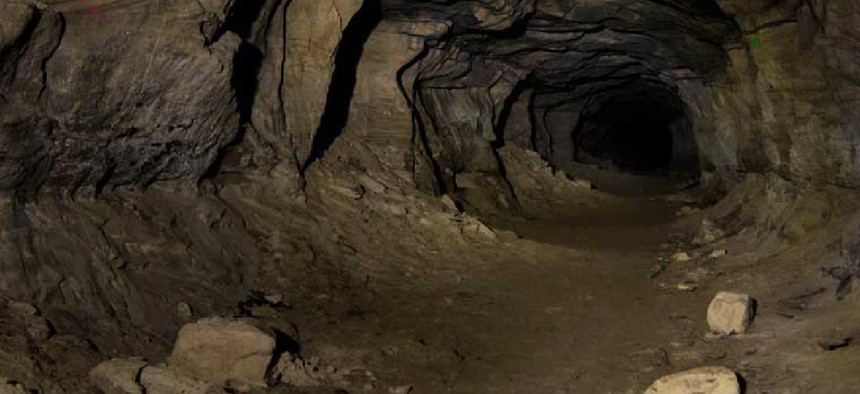DARPA digs into subterranean mapping
Defense Department's research agency is looking for technologies to help the military and responders map, navigate and search underground complexes.
The Defense Department's research arm is getting interested in mapping and navigating subterranean space.
As part of its SubT Challenge, the Defense Advanced Research Projects Agency wants technologies to help the military and responders map, navigate and search underground complexes, from man-made tunnel systems, urban and municipal underground infrastructure as well as natural cave networks.
DARPA will convene a competitor's day in the Louisville Mega Cavern, a 100-acre manmade limestone cave underneath a portion of the city's southern section. The cave currently houses commercial storage facilities and public recreation businesses such as underground zip lines and electric bike and tram tours. Before being converted to current uses in the late 1980s, the cavern was an underground crushed limestone quarry from the 1930s to the 1970s.
DARPA said it is looking for teams of providers that can put together core systems that have autonomy, perception, networking and mobility with an eye towards developing integrated systems and software solutions that can meet the extreme challenges underground environments present.
The research agency has set up dual systems and virtual competition tracks for the effort. The systems track will develop novel physical approaches that will be tested in underground courses, it said, while the virtual track looks to develop software and algorithms to construct virtual models of subterranean systems, environments and terrain for simulations aimed at larger-scale scenarios.
Because of the location, the agency noted that only the first 240 registrants will be able to physically attend the meeting. Another 500 participants will be able to join a webcast of the Sept. 28 event.
NEXT STORY: Congress demands more openness from DOD on cloud





